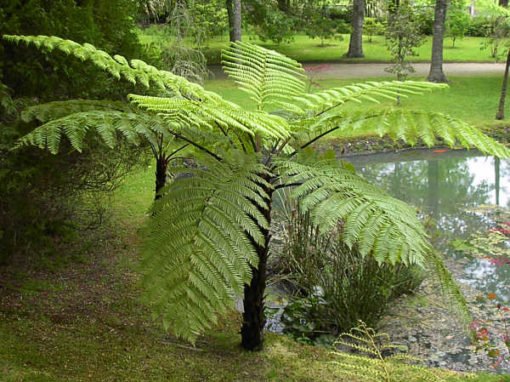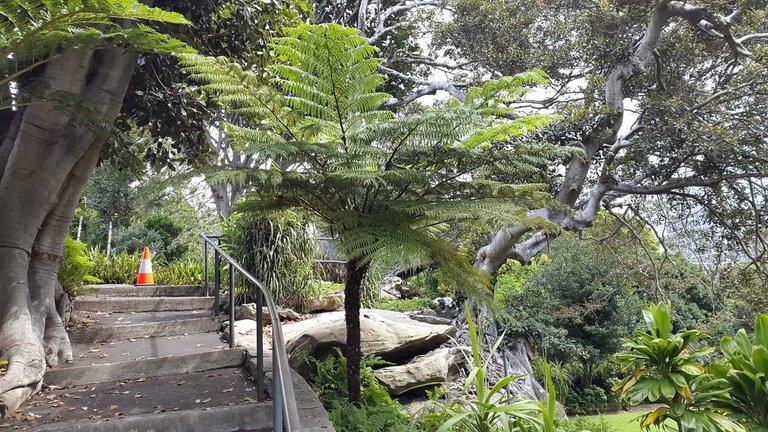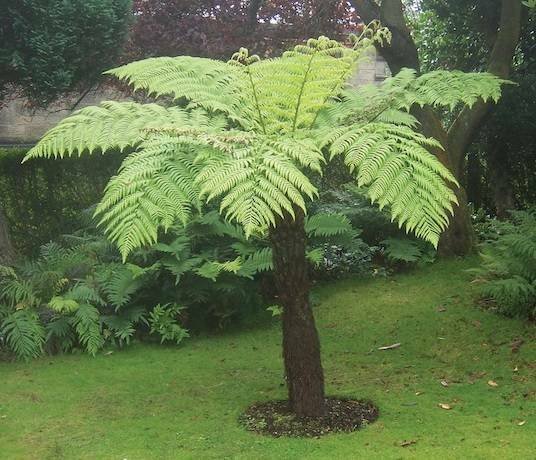Excellent photos and a majestic plant, my friend and C. cooperi, the Lacy Tree Fern, derives this name from its delicate fronds. It is also known as the Australian Tree Fern as it is one of the most commonly grown Australian tree-ferns.
C. cooperi is quite distinctive from C. australis in that it has a more slender trunk with distinctive "coin spots" where old fronds have broken off the trunk. C. cooperi fronds are bright green and lacy and tend to be very fast growing. There are several major horticultural varieties of this fern including Cyathea ‘Brentwood’ which has paler fronds and scales and C. ‘Robusta’ which tends to be darker in both characters. C. cooperi is the one of the most popular tree ferns, along with Dicksonia antarctica due to its rapid growth form, hardiness and aesthetic appeal.

C. cooperi is naturally found in tropical lowlands, along the coast of Queensland and New South Wales.

Tree-ferns grow best in high humidity and high soil moisture conditions. It is therefore important to use good-quality mulches and to top them up regularly as this will not only keep the soil moist but also provide nutrients to the shallow root system. Tree-ferns usually respond well to organic fertilizers and well-rotted animal manures, C. cooperi especially as it tends to display particularly vigorous growth.

Though a wide range of pests attack ferns they rarely cause significant damage. If outbreaks do occur tree-ferns can be treated with the standard array of organic and non-organic pesticides. It has been found that the use of fertilizers can reduce a tree-ferns susceptibility to attack. Thus by providing adequate food, water and shelter you will be able to grow beautiful and healthy tree-ferns in your own garden!
Thank you @ctrl-alt-nwo

